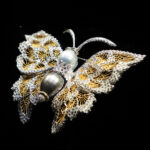Gemstones have the power to transform a piece of jewellery and influence its design. We spoke with jewellery brands to explore how their choice of stones defines their creations.
For jewellery brands, the question of whether to prioritize gemstone quality or design concept has long been a point of contention. Some prefer to let the gemstone inspire the design, while others lean towards finding the right stone to fit a preconceived design idea. Regardless of the approach, the quality of the gemstone itself serves as the foundation for any jewellery design.
For Pomellato, the gemstone takes center stage. The brand has its own gemstone philosophy, which it calls “free gems.” In essence, this means that each stone is celebrated for its unique characteristics. According to Vincenzo Castaldo, Pomellato’s Creative Director, this philosophy finds its purest expression in the Nudo ring.
First introduced in 2001, the Nudo ring gained fame for its innovative technique of securing gemstones to the band. Instead of using prongs that might detract from the stone’s beauty, Pomellato created a collet at the base of the gem, giving the illusion that the stone is floating. This isn’t the only unconventional aspect of the design—the gems are also cut asymmetrically with softened edges.
Castaldo explains, “The Nudo collection freely defines jewellery design with its setting-free, prong-free approach. Our special cutting and setting techniques enhance the personality of the gems, allowing light to play with the transparency and irregularity of the 57 facets without constraints.”

The Nudo ring isn’t the only way Pomellato explores this concept of freedom. The brand favors setting diamonds on irregular pavé, determined by the characteristics of the stones rather than the setter’s will—each diamond’s position is specifically chosen to create a play of light and shadow.
Pomellato also champions the use of raw stones. “We create one-of-a-kind high jewellery pieces using raw stones precisely because they have their own natural beauty and peculiarities; they are independent, pure expressions,” explains Stefano Cortecci, Pomellato’s gem master. “
When we use more traditional cut stones, we express the concept of ‘free gems’ through color. In the Ode to Milan high jewellery collection, we selected a range of unusual, memorable gem colors that are vibrant and also express strong emotions.”
Greek fine jewellery brand Lalaounis takes a similar approach to using gemstones in their work. “For us, gold is paramount, and we use stones to complement the metal,” says Demetra Lalaounis, CEO of her eponymous brand. “The stones themselves are not the primary focus for us; what’s important is the technique, such as filigree, hand-hammering, granulation, and hand-weaving.
We’ve revived all these ancient skills.” Given that many collections directly reference unearthed ancient pieces, Lalaounis carefully selects stones that reflect the period, using deep hues like rubies, sapphires, and emeralds in her Byzantine collection to evoke the rich tones found in church mosaics of that era.
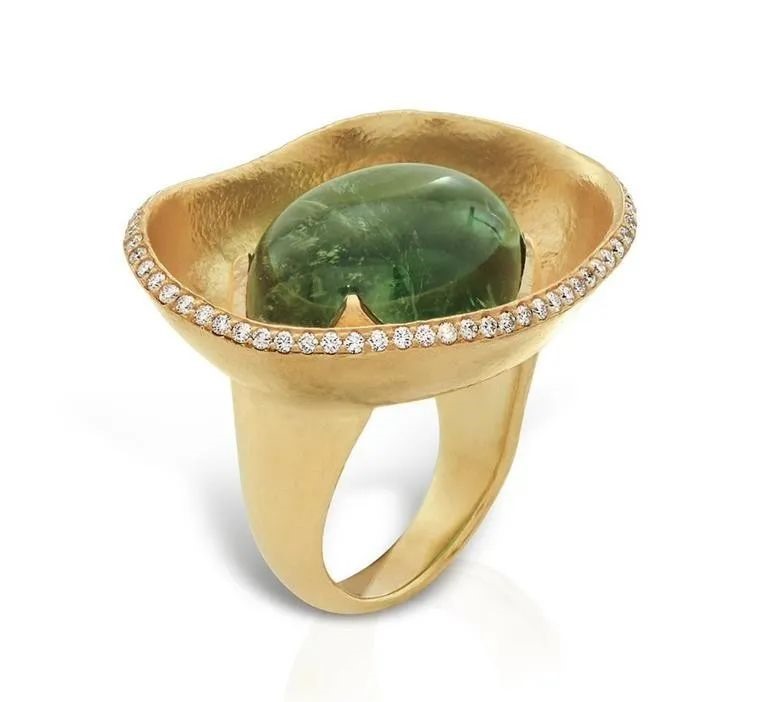
She also makes decisions based on which hues complement the techniques used—for example, pairing circular patterns with filigree work. “Nothing is entirely predetermined,” she says. “There’s always a common thread in terms of design, but there are always some changes that occur during the process of creating a piece.” One thing that doesn’t change, however, is Lalaounis’s love for gemstones. “
After obtaining a degree in finance, I studied gemology and became fascinated by the world visible in stones under a microscope,” she says. This fascination leads her to appreciate stones with inclusions. “I believe inclusion is an attitude because you don’t want to break what the stone originally was; it reflects the inherent properties of that stone, it’s its own identity card, making it unique. What some might consider imperfections are actually the special characteristics of the stone.”
Imperfection is certainly not part of Bulgari’s philosophy. The Italian brand is known for its large, cabochon-cut stones with a smooth, “candy-like” beauty. Bulgari began using colored gemstones in the early 20th century when many jewellers defaulted to diamonds. History has proven Bulgari’s long game to be correct.
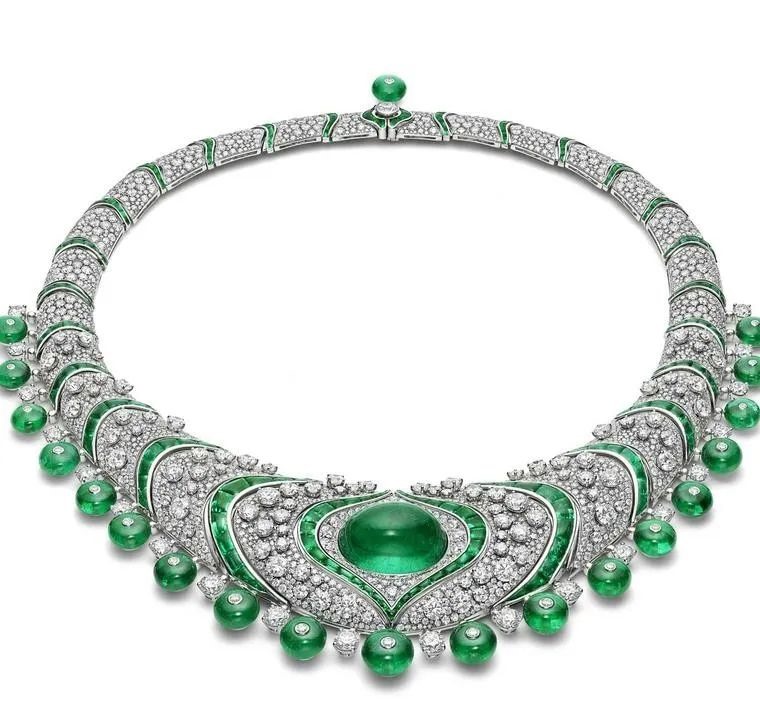
In the 1970s, the market saw a surge in demand for colored stones; a trend the brand capitalized on. Fortunately, this love for color aligns with current Creative Director Lucia Silvestri’s passion. As seen in the documentary “Inside the Dream,” which reveals the secrets behind creating high jewellery masterpieces, she is a gem enthusiast, from stone selection in Jaipur to conceptualization at Bulgari headquarters and crafting by skilled artisans in Bulgari’s workshops.
German brand Stenzhorn, a color enthusiast, was born after its founder Klaus was invited to visit an emerald mine in Colombia and was captivated by the beauty of these gemstones. The company takes a more design-centric approach. “Our designs are not created around a specific stone. Of course, during the design process, we have a precise idea of which color stones we want to use, but the selection is not made in advance,” explains Patrizia Stenzhorn.

Stenzhorn emphasizes that stone selection is a meticulous and time-consuming process, using only 5-10% of the raw stones to ensure color uniformity in invisible setting projects.
“Selecting stones is one of the most time-consuming processes. We carefully choose the required sizes and colors. To ensure our invisible settings have the same color, we purchase large quantities of gemstones, to the extent that we only use 5% to 10% of the visible stones.” This care and attention are evident in their creations.
Poppies are picked out in blood-red rubies, each one exactly the same color as its companions; in the A Fior de Rosa collection, delicate pink sapphires are offset by beautiful fuchsia rubies, and, as you might expect, emeralds are the color of the Amazon rainforest.
Bucherer’s fine jewelry collection is equally diverse, with the hues of the gemstones influencing the creation of the pieces. Cocktail rings sparkle with sapphires the size of goblets or vivid golden-green peridots.
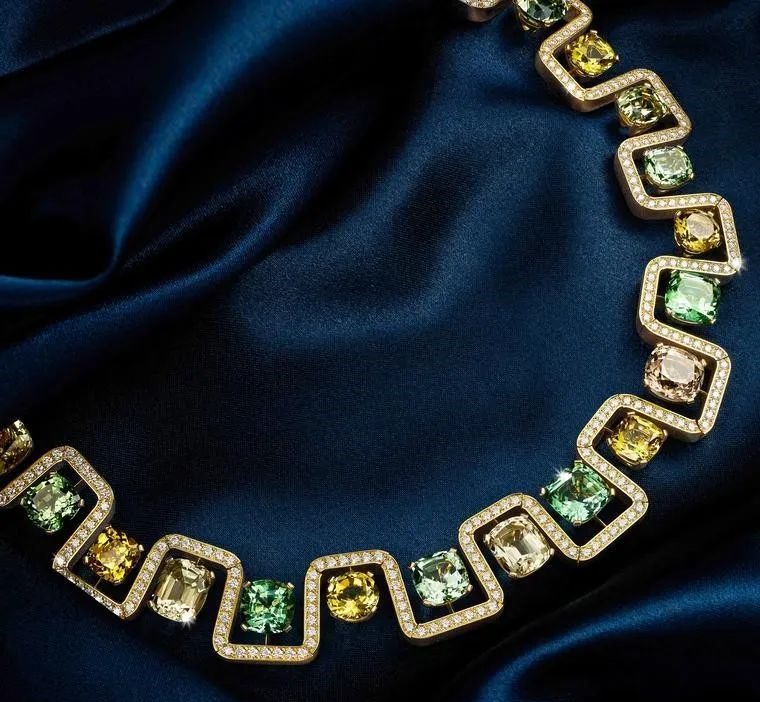
Bucherer’s jewelry expert Danilo Cariola explains that all fine jewelry pieces are crafted in their Lucerne atelier.
Its Manhattan Collier is set with an abundance of tourmalines and fiery red and orange garnets, surrounded by a border of 340 diamonds; the combined effect is like the first rays of a beautiful sunset reflected on the Hudson River. “All our large pieces are made in our Lucerne atelier,” explains Danilo Cariola, the brand’s jewelry expert. “We don’t shy away from using treated stones. People think ‘treated’ means unnatural, but it can actually make the colors more beautiful.”
For Louis Vuitton’s new LV collection, the cut of the stones determines the design. In this collection, LV introduces a brand new proprietary cut for the first time – the LV Monogram Star.
Based on the star-shaped monogram flower designed by George Louis-Vuitton for trunks in 1896, it has 53 facets and was designed by Francesca Amfitheatrof, the Artistic Director of Watches and Jewelry, transforming into an intriguing series of rings, pendants, and earrings. As with everything LV does, the brand’s signature is everything.

The half-paved bands are reminiscent of the Art Deco V motifs that Gaston-Louis Vuitton would use to decorate his handbags in the 1920s and 30s, with the brand drawing inspiration from the Damier canvas created by Georges in 1888. This is a very unusual application of gemstone cutting.
Under the nurturing guidance of founder Laurence Graff, a profound passion for gemstones, particularly diamonds, drives everything in this extraordinary family business. “I’ve always been fascinated by diamonds,” he says, “I remember looking at them, studying them closely to understand their purity and the way they were cut. It’s an innate feeling that has evolved into a lifelong passion.”
It is due to this that the brand has acquired some of the world’s most famous stones from “infinite diamonds,” including a heart-shaped diamond weighing 157.80 carats.
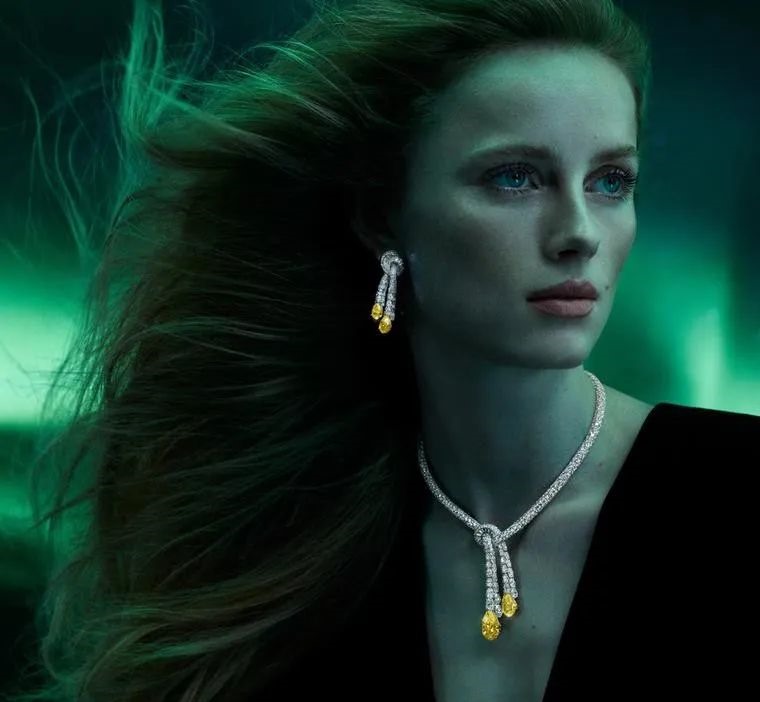
The founder Laurence Graff’s deep love for gemstones, especially diamonds, drives the operations of this extraordinary family business.
There’s also the Golden Empress, a fancy vivid yellow cushion-cut diamond weighing 132.55 carats, cut from a rough stone unearthed in the Kingdom of Lesotho. Somewhat unusually for Graff, its latest collection isn’t particularly inspired by gemstones, but rather by an advertisement that first appeared in 1990 featuring Graff’s famous “Green Lady.” In the ad, a woman with skin the color of the Wicked Witch of Oz is adorned with diamonds; her verdant skin complementing her jewelry perfectly.
Fellow Londoner David Morris combines these two approaches—allowing both gemstones and design to equally inform his haute joaillerie collections. CEO and Creative Director Jeremy Morris oversees the sourcing of all stones—a process that can take years due to the rarity of the stones used and specific color combinations.
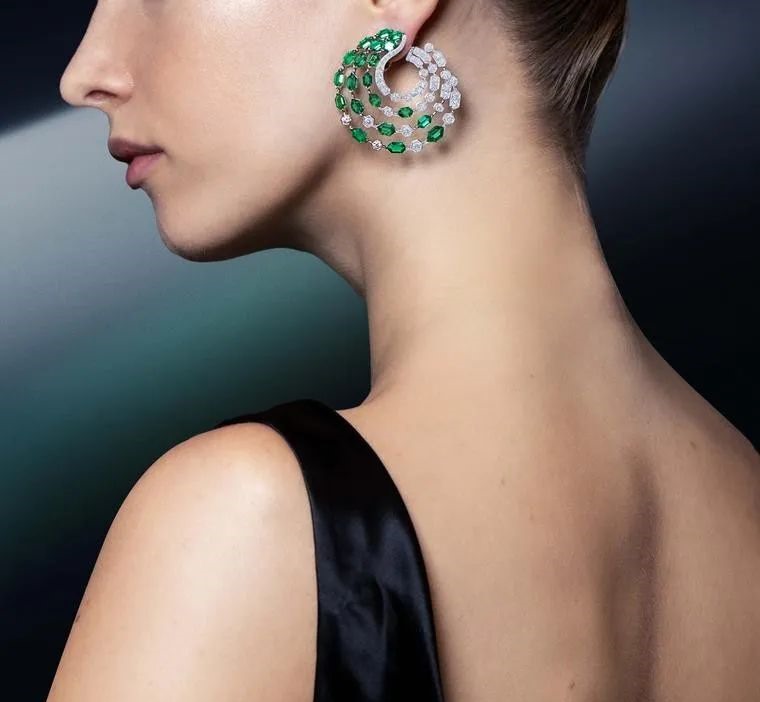
David Morris allows both gemstones and design to shape its haute joaillerie collections.
Morris then lets his intuition guide him in deciding how best to showcase a stone in a piece of jewelry; he will even change designs during the creation process to ensure they are presented in the best possible way. Interestingly, Morris has always sourced stones from auctions. By collecting previously loved pieces and reimagining them into more modern designs, he’s able to design around exquisite stones that might not otherwise be readily available.
For centuries, gemstones have inspired humanity, and we have artifacts to prove it. Whether the stone came first or the design did is beside the point. For millennia, nature’s creativity and human creativity have coexisted, interacting and complementing each other in the pursuit of beauty.
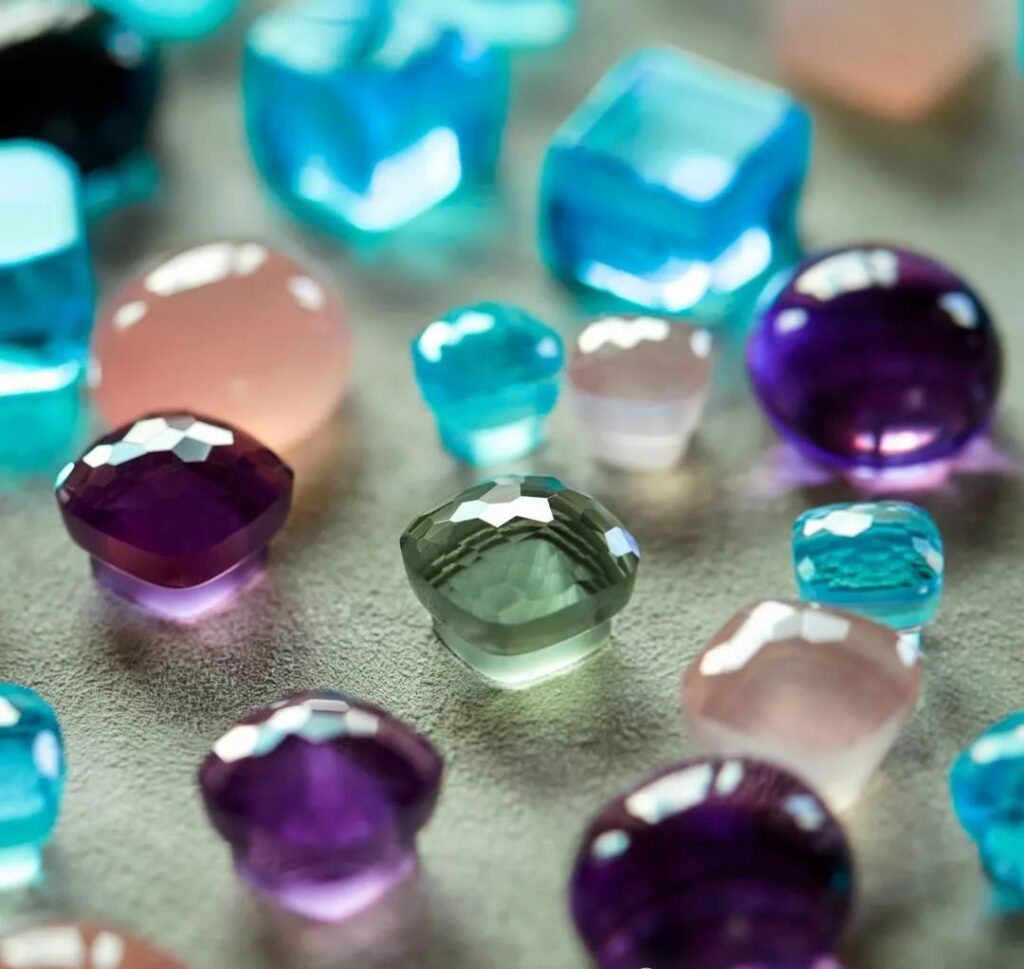
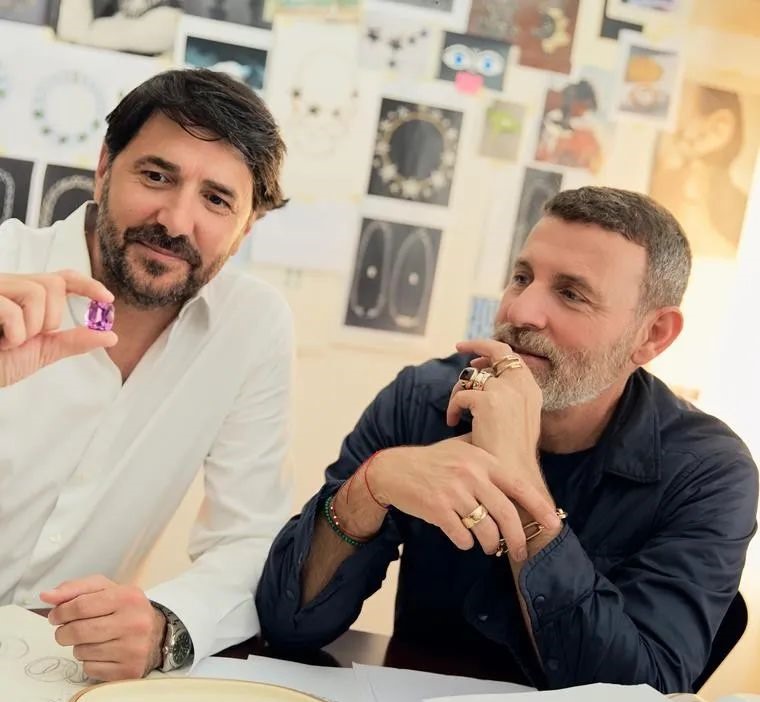
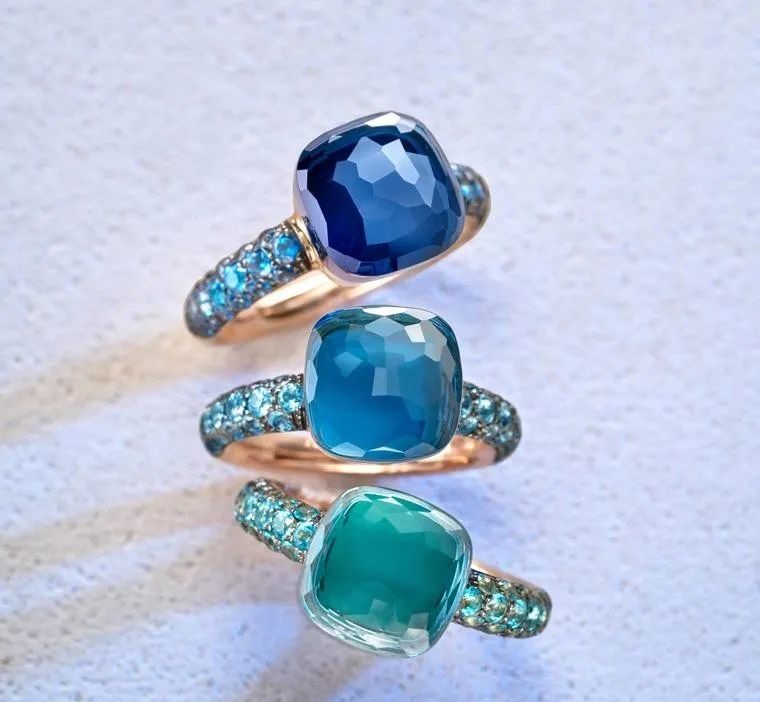
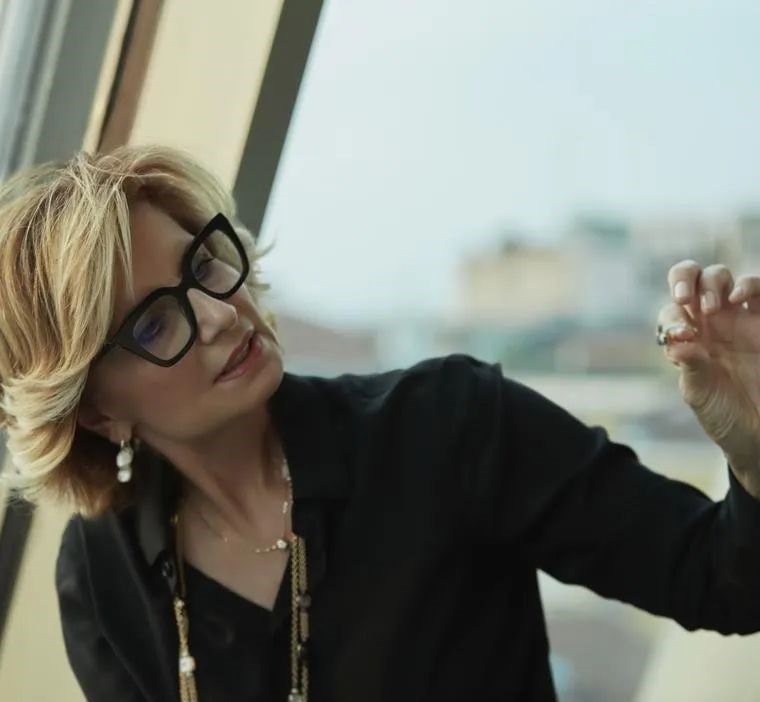
The Interplay of Gems and Design: How Stones Shape Jewellery Masterpieces
Tweet

